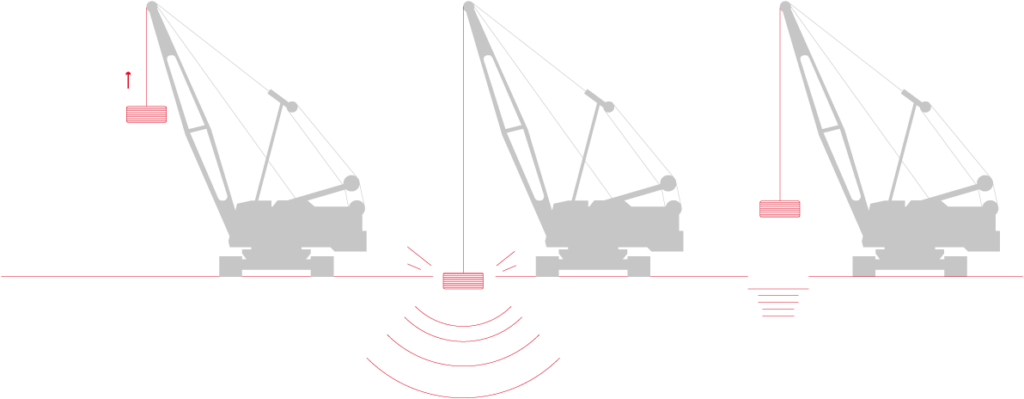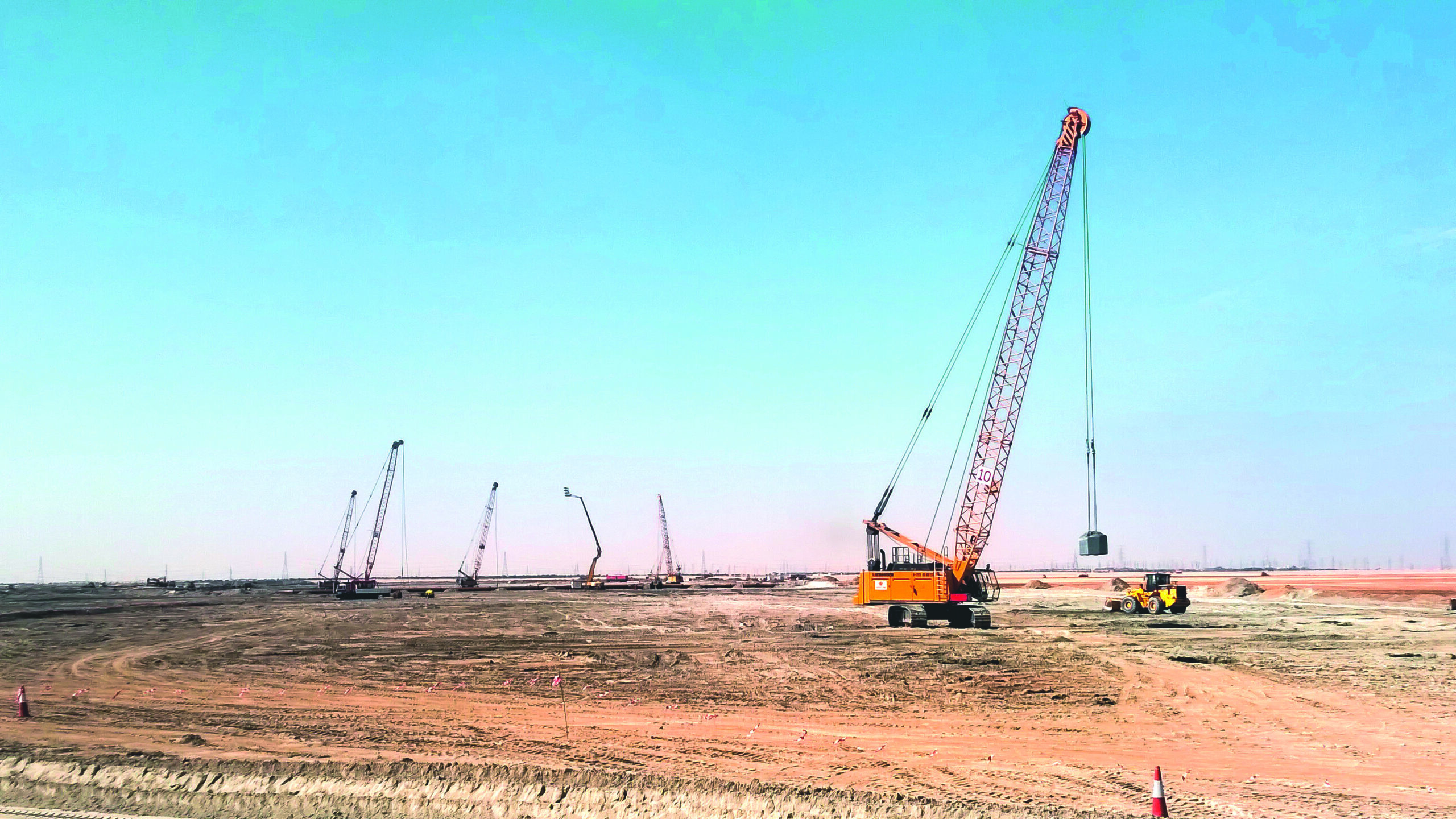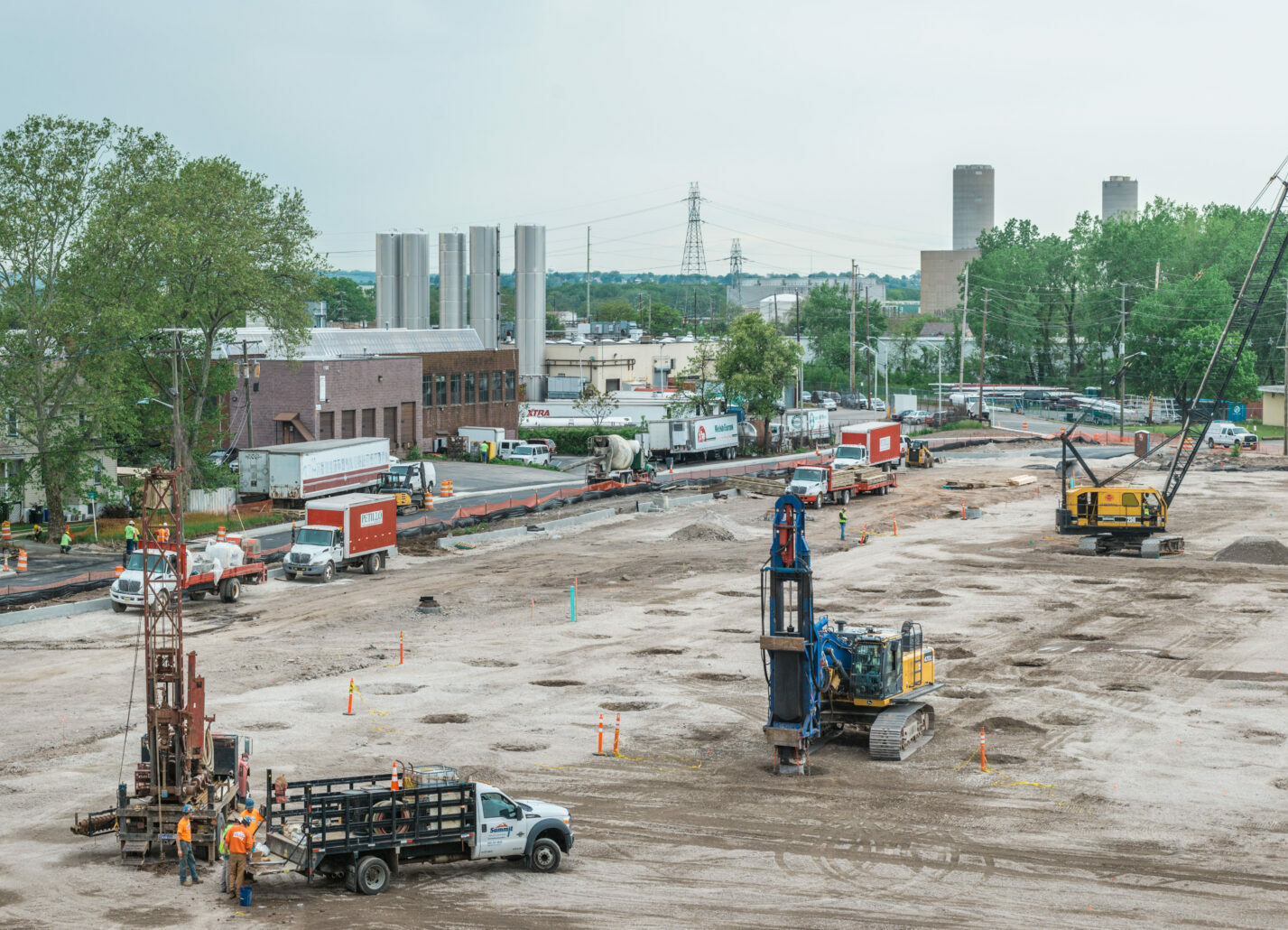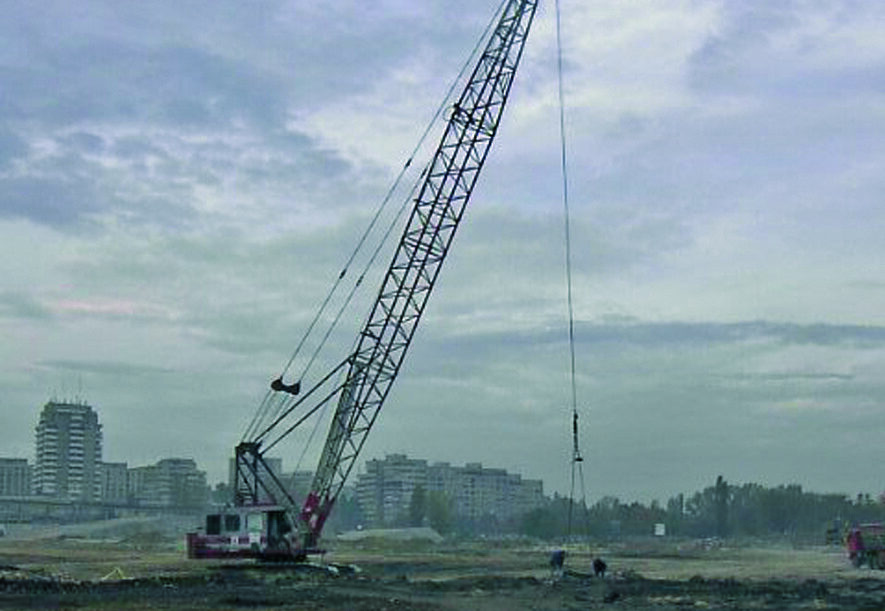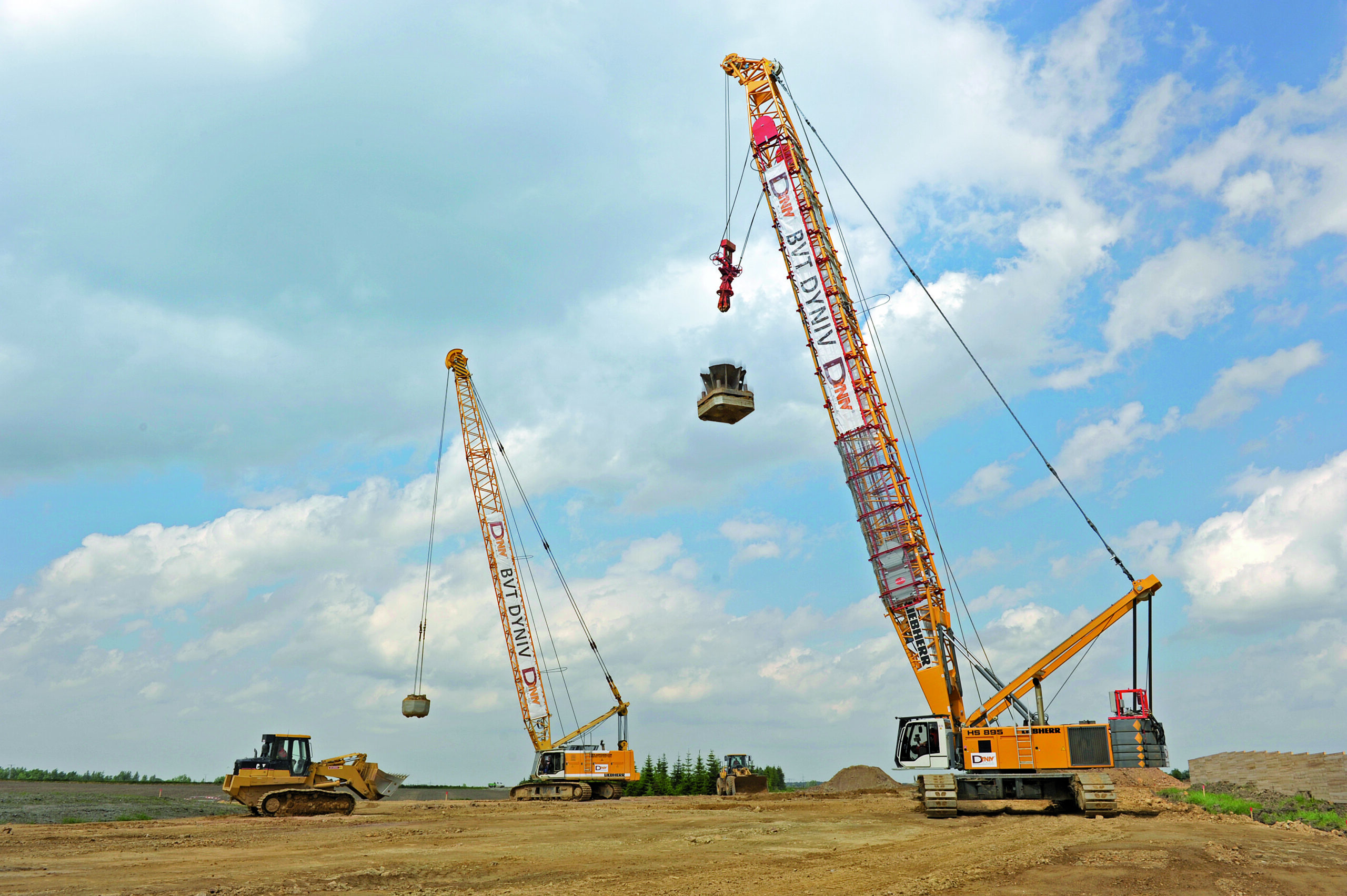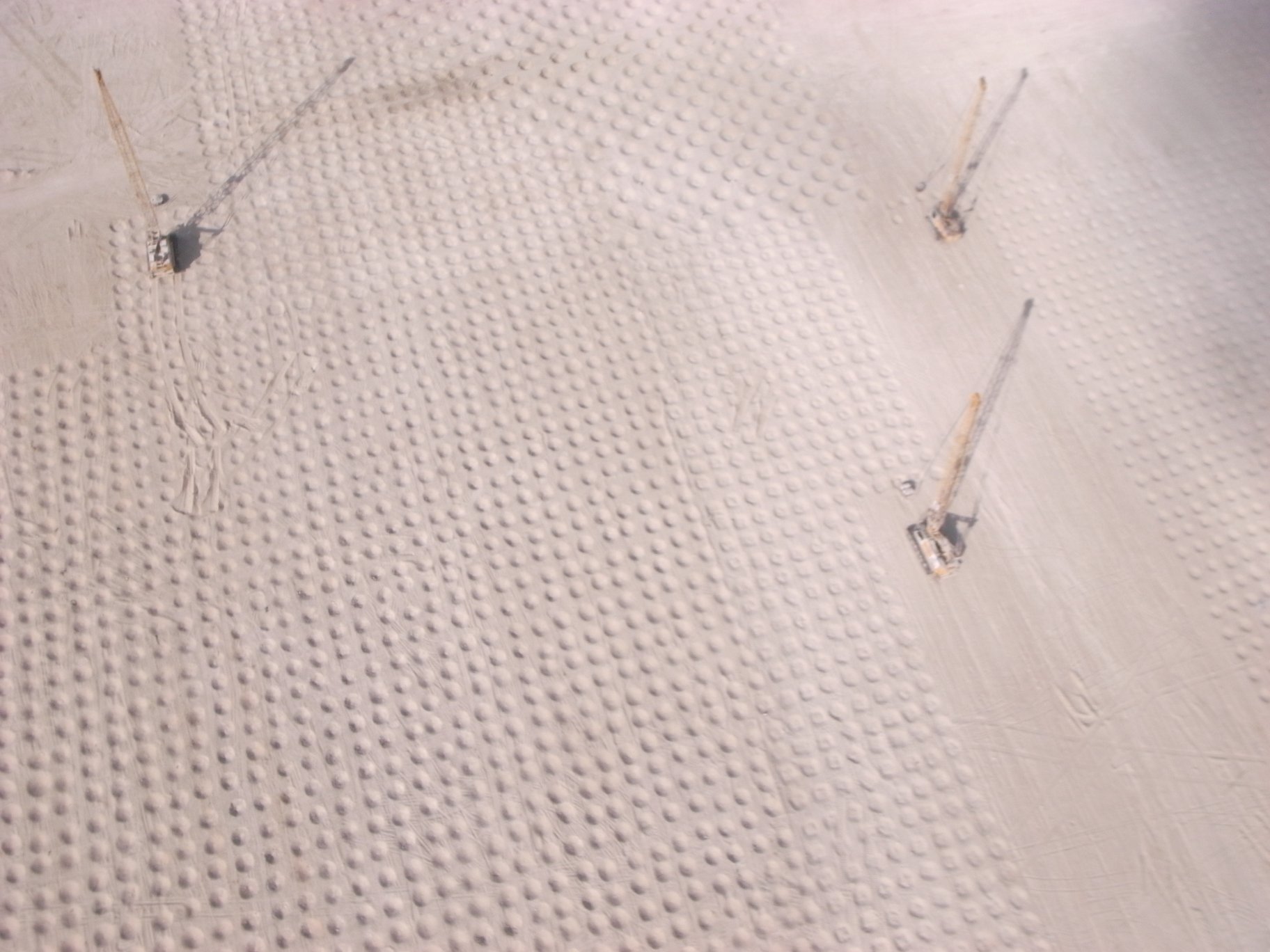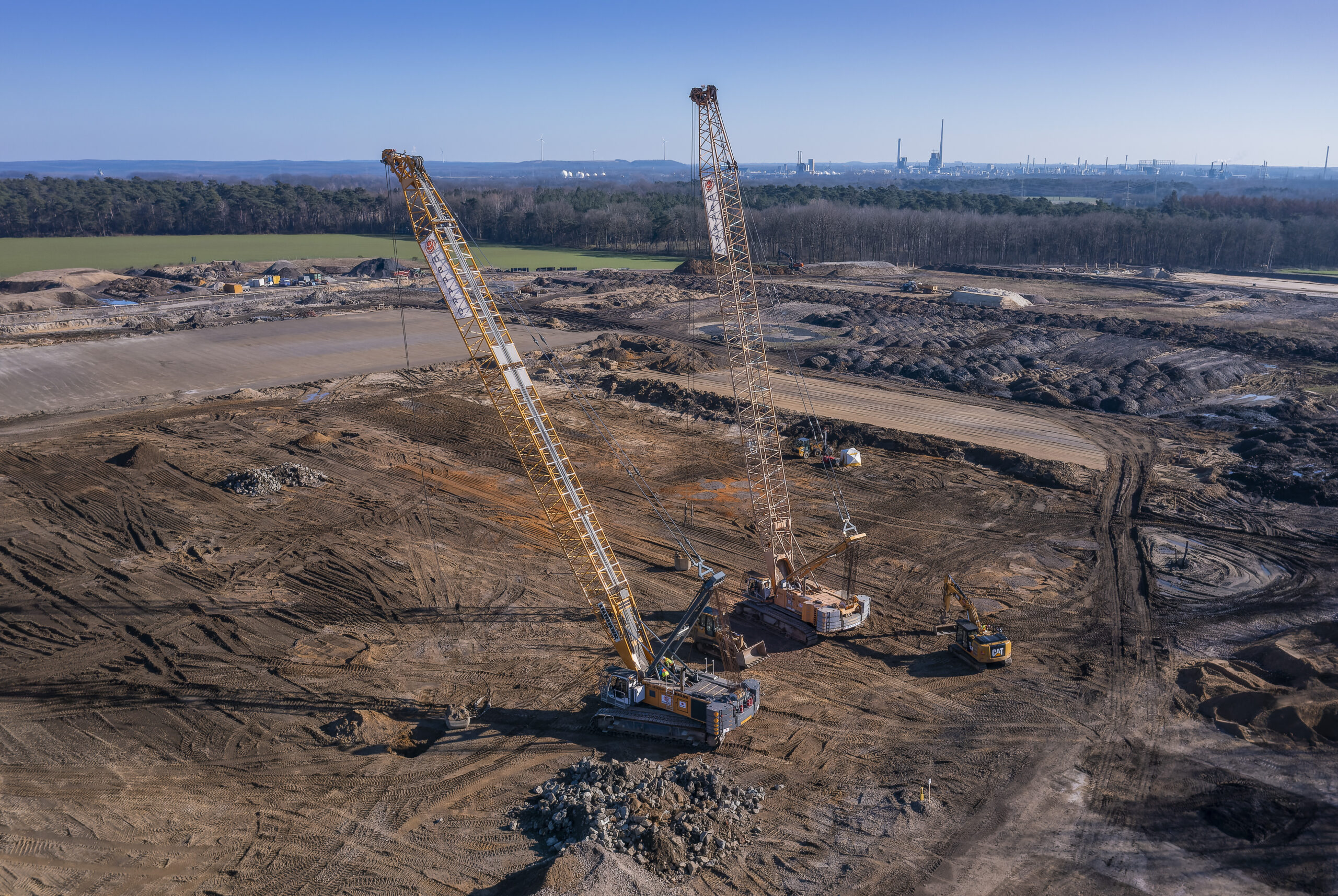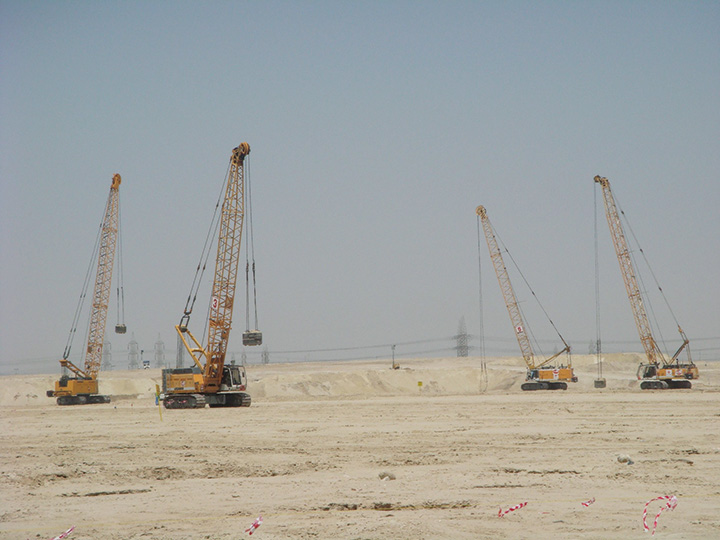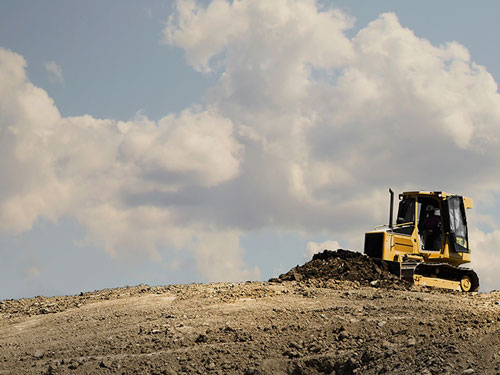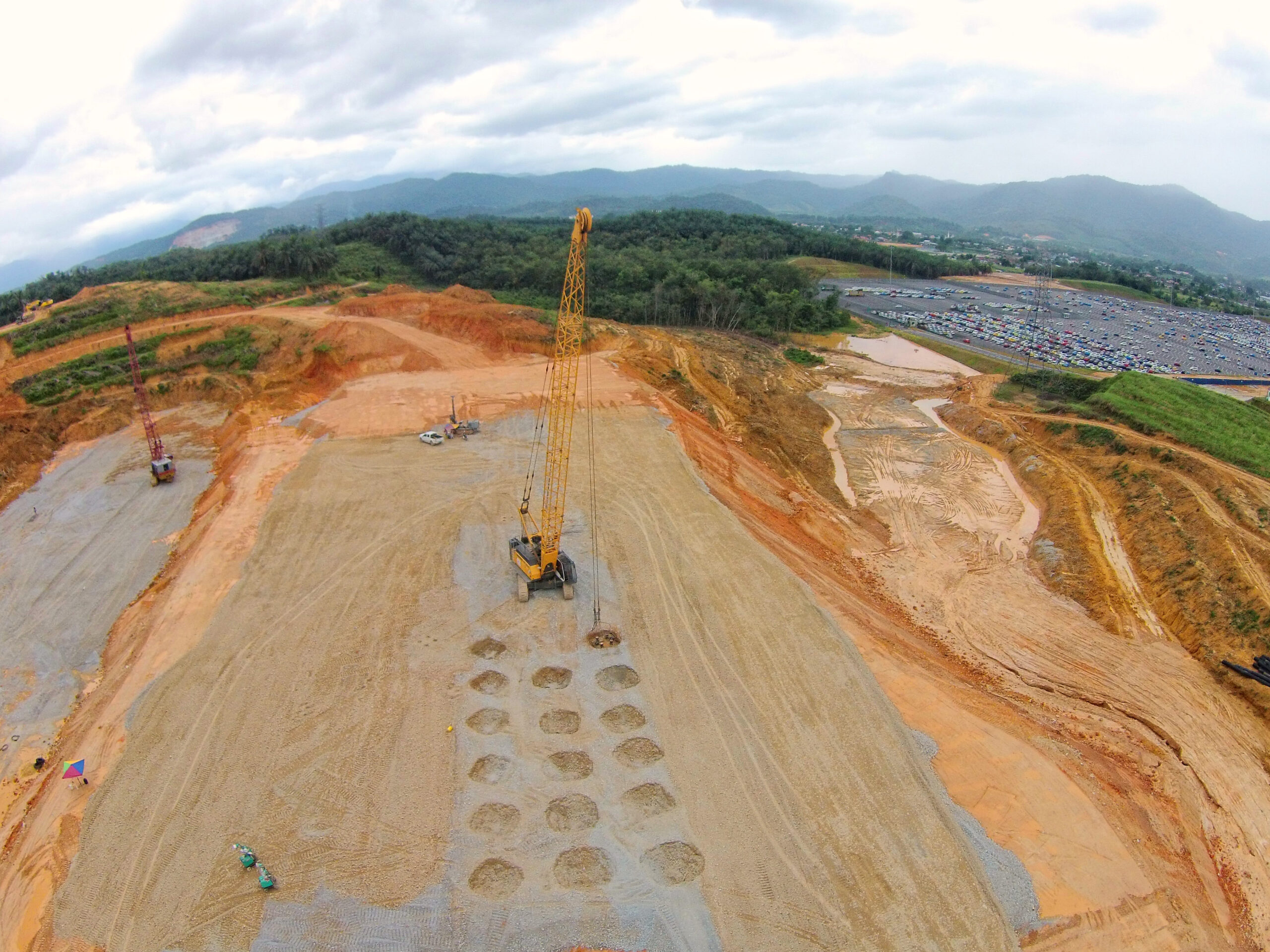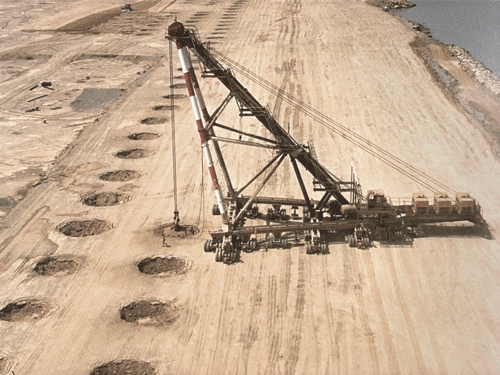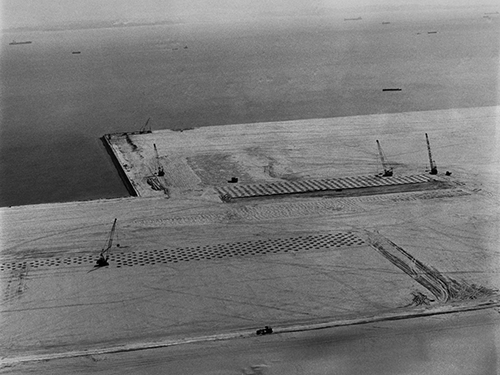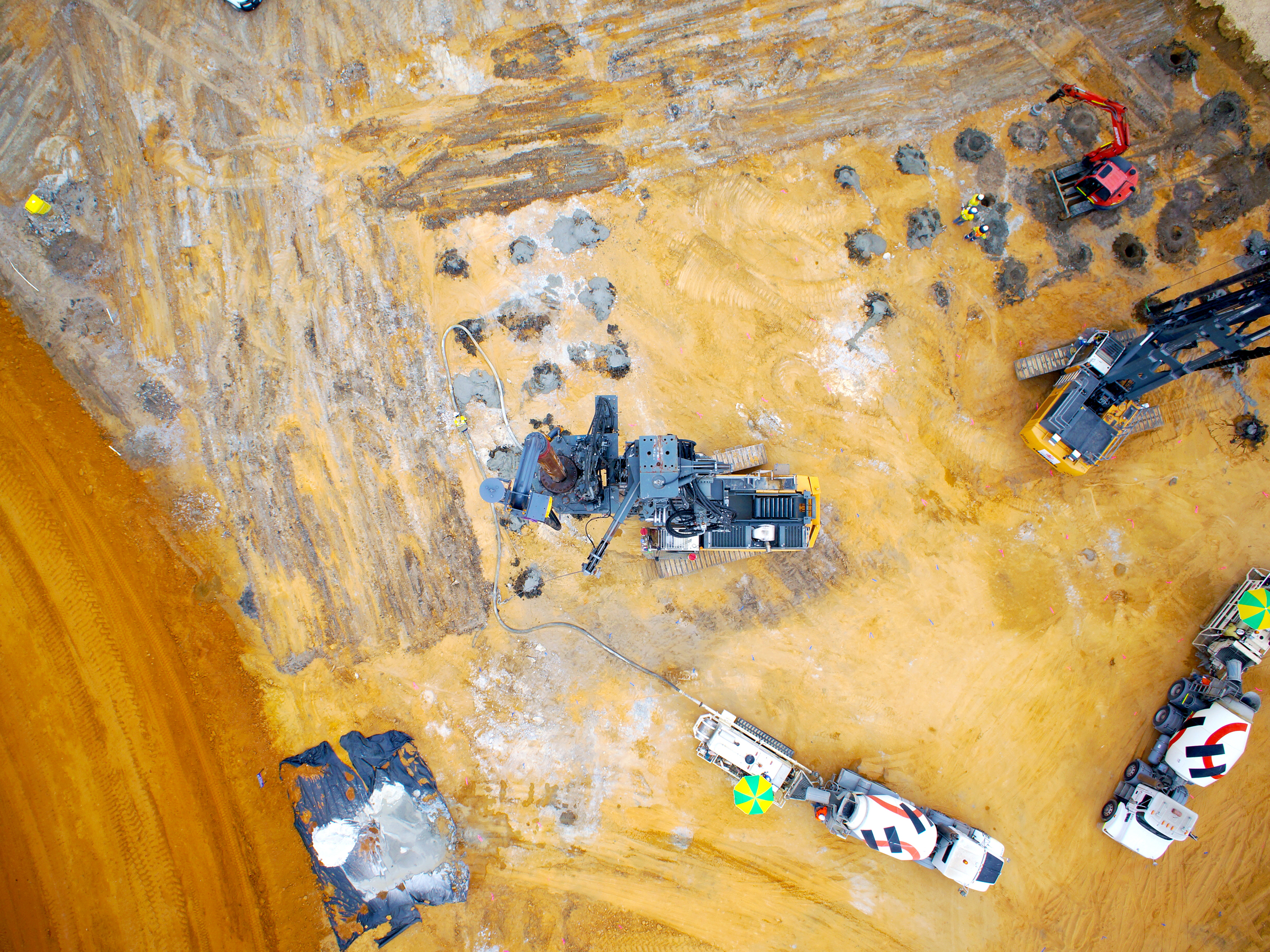Dynamic compaction is a ground improvement technique that densifies the soil by repeatly pounding it with a high energy pounder.

Presentation and key elements
What is dynamic compaction and why do we use it?
The technique was invented and developed by Mr. Louis MENARD. Since the late 60s, the Menard group has applied this technique to thousands of sites for very different types of structures and conditions (port and airport platforms, heavy storage, buildings, landfills…) to reduce settlement, mitigate liquefaction, stabilize or treat hydraulic fill, limit lateral earth pressure behind quay walls, etc. The dynamic compaction technique achieves deep ground densification using the dynamic effects of high energy impacts resulting from the drop of large pounders.
Basic principle of dynamic compaction
The basic principle of the technique is a transmission of high energy waves through a compressible soil layer in order to improve its geotechnical properties at depth. Dynamic compaction is applicable to any type of granular soil. This technique is particularly well-adapted to nonorganic heterogeneous fill, made ground and reclamation areas with varying characteristics, even with the presence of large blocks. Dynamic compaction is effective in both unsaturated and saturated soils below the water table.
Execution of dynamic compaction
Dynamic compaction requires the use of pounders weighing between 12 to 40 tonnes released in free fall from a height of 10 to 40 meters. The arrangement of the impact points and the other parameters of the treatment –energies, phasing, rest periods- depend on the characteristics of the soil to be treated and on the results obtained from the initial trial zone.
